Results 5,401 to 5,410 of 12094
Thread: Anandtech News
-
10-06-15, 10:32 AM #5401
Anandtech: Marvell Announces First MoChi Architecture Modules: SoCs Go To Pieces
Much has been written over the last few years on the significant cost issues semiconductor companies are and will be facing over the coming years. While newer manufacturing nodes have increased transistor density and reduced power consumption, they have come at a cost of increased manufacturing and development costs for chips using these nodes. Yet more worrying for manufacturers, the costs of preparing chips for new nodes isn’t just rising but rising quickly, with mask sets already over a million dollars and expected to grow even further thanks to the high costs of developing masks for current multi-patterning technologies.
As a result semiconductor companies have been increasingly focused on containing costs, especially in the highly competitive and lower margin commodity markets, where customers are very sensitive to price and have many alternatives. These customers in turn still need higher performance parts to improve their own products, but they can’t necessarily afford to pay the full cost for a chip built on a cutting-edge node.
Looking to address this problem, earlier this year Marvell announced their Modular Chip (MoChi) architecture. The MoChi architecture in turn would attempt to control rising SoC costs by modularizing traditional SoCs and only manufacturing the most performance critical modules on a leading-edge node, while manufacturing the other modules on cheaper existing nodes. By splitting up a chip in this fashion, the number of transistors laid down on the leading-edge node would be held to a minimum, resulting in a smaller module that would be cheaper to design and cheaper to produce than a full SoC, all the while the other modules would be relatively cheap to produce and cheap to design (if not largely held over from existing designs to begin with).
After previously announcing the MoChi architecture and its design goals, this morning Marvell is announcing that the first two MoChi-enabled SoCs. The first of these is the AP806, a quad-core Cortex-A72 design that contains just the CPU, memory controller, and associated logic, and is designed for higher performance devices. Meanwhile at the other end of the spectrum is the ARMADA 3700, a more integrated MoChi module containing a dual-core Cortex-A53 processor setup along with additional networking IP and primarily designed for use in networking products.
Marvell is not disclosing what manufacturing node either module is being produced on, however in the case of the AP806 it is a likely bet that it is based on TSMC’s 16nm FinFET process given the focus on ARM’s high-performance Cortex-A72 processor. Meanwhile the ARMADA 3700 can be considered a toss-up; as MoChi is meant for post-28nm designs it’s possible it’s a 16nm design as well, though 20nm and 28nm are not out of the question if Marvell is focusing more on the customization possibilities of its modularity than die size and power efficiency.
Meanwhile joining these two modules and completing the MoChi design will be other modules. Developed by both Marvell and third parties, Marvell has not announced any other modules at this time. However in discussing these modules, the company noted that they would contain secondary functions like I/O, security, WiFi, LTE, and other more traditional south bridge functionality. It’s by producing these modules on older processes (e.g. 28nm) that Marvell is able to contain costs, and meanwhile it gives them and customers the opportunity to mix and match modules to build an SoC with the specific functionality they’re after. And in the case of modules from third parties, this also serves as an avenue to integrate third party IP into what’s otherwise a Marvell SoC without Marvell having to go the semi-custom route of integrating multiple vendors’ IP into a single SoC.
Getting back to MoChi itself, as these are the first modules based around the architecture, it’s interesting to note the tradeoffs that are involved in developing a MoChi SoC. While Marvell more immediately limits development costs and production costs via a smaller die on a leading-edge node, this is balanced with the fact that a MoChi chip is now a multi-chip module (MCM), which does have an impact on the development and power costs of connecting the modules, along with producing a larger package overall. So for Marvell there is a balancing act between driving down die costs without inflating other costs by too much.
Providing the actual interconnect functionality is a coherent, high-speed interconnect Marvell calls Aurora2, though it’s more frequently referred to as simply the MoChi interconnect. Based on cost and performance needs, the MoChi interconnect is available in what Marvell is calling both parallel and serial configurations. The parallel interconnect is faster, but is limited to short runs for cost and power reasons, whereas the serial interconnect is slower but cheaper as a result. For obvious reasons the parallel interconnect needs to run along a single SoC layer, whereas from Marvell’s comments it sounds like modules connected via the serial interconnect can be layered ala Package-on-Package technology.
Meanwhile thanks to the MoChi interconnect, Marvell is able to hide from software the fact that MoChi spreads out the different functions of an SoC over multiple modules. As a result the use of multiple modules is transparent to software, which continues to see the SoC as a single monolithic SoC. Marvell calls this a Virtual SoC design.
Unfortunately Marvell is not disclosing much in the way of details on the manufacturing side of matters, however from what we know about TSMC’s catalog we can take an educated guess at what Marvell is doing. Most likely the company is using TSMC’s Chip-On-Wafer-On-Substrate service (CoWoS), which as implied by the name involves building multiple dies on a single shared substrate. CoWoS is designed in part for precisely the kind of mixed-process modules that Marvell’s MoChi architecture uses, with the single shared substrate allowing for shorter runs of higher density connections. This in turn would allow Marvell to keep interconnect power in check, something that’s especially important for the MoChi parallel interconnect.
The tradeoff for Marvell here is that the shared substrate itself drives up costs and the use of Through-Silicon-Vias – which we first saw with HBM – also presents cost challenges. Which given this, it’s likely that CoWoS is only being used for the parallel interconnect, especially given the cost goals of the slower serial interconnect.
Wrapping things up, in discussing today’s announcement Marvell also confirmed that the announcement of the AP806 and ARMADA 3700 closely follows the sampling of these two modules. The company received their first samples in the lab for a few weeks now, so ideally customer samples shouldn’t be too far behind. At this point Marvell expects that MoChi chips should start showing up in products by the end of next year.
As for what products they’ll appear in, that’s ultimately up to what customers want. But given the fact that MoChi is a cost control technology, it stands to reason that it’s more likely to show up in cost-sensitive embedded applications than high-profile mobile devices. Marvell for their part notes that a lot of the initial focus is on enterprise and data center networking – particularly with the networking-optimized ARMADA 3700 – and along with storage products these are likely the first markets that we’ll see MoChi-based SoCs show up in.
More...
-
10-06-15, 10:32 AM #5402
Anandtech: HSA Foundation Update: More HSA Hardware Coming Soon
When AMD set about bringing their CPU/GPU fusion initiative to life with the Heterogeneous System Architecture (HSA) earlier this decade, one point AMD made early-on was that while they strongly believed in the need for heterogeneous computing and the performance gains it would offer, they would also be pragmatic. When you’re attempting to significantly alter the computing landscape and create architectures that can accommodate massively parallel workloads just as well as they can traditional serial workloads, it means you have to address not only the hardware end of the equation but the software end as well. In other words it means you need an ecosystem, and you cannot build an ecosystem of one.
To that end, in 2012 AMD founded the Heterogeneous System Architecture Foundation to serve as a neutral consortium to control the development of the HSA standard. Joined by co-founders ARM, Imagination, MediaTek, and others, the HSA Foundation would create the ecosystem necessary for HSA to succeed by creating a common standard for heterogeneous computing that multiple hardware vendors would implement. Software developers in turn could then write software targeting the HSA standard, allowing this software to work in a full heterogeneous manner across a wide range of hardware.
Meanwhile the fact that HSA was originally developed by AMD before being handed over to the HSA Foundation meant that while the major founders of the Foundation were all equals at the table, the timeline meant that the initial versions of HSA were to be spearheaded by AMD. AMD’s already-in-development hardware would be the first HSA-capable hardware to be released, and given the long lead times required for processor development, the other partners would be releasing their HSA designs later on, needing a full development cycle to integrate the technology. To that end the first pre-1.0 HSA hardware was 2014’s Kaveri APU, and the first 1.0 HSA hardware is AMD’s 2015 Carrizo APU.
Jumping to the present, a bit over three years since the HSA Foundation was formed, the HSA Foundation is now preparing for the next generation of HSA products. To that end, the Foundation is presenting an update on the state of HSA implementations at this year’s Linley Processor Conference. With the release of Carrizo putting HSA 1.0 into motion, ARM, Imagination, and MediaTek are now discussing their own HSA hardware release plans in greater detail. This is both to demonstrate their continued support for the standard as well as to offer some further detail in how the HSA ecosystem will work in the future with multiple vendors selling products and potentially IP from multiple vendors all in the same SoC.
ARM for their part is not yet announcing any specific IP or dates, but they are reiterating that they have HSA-capable IP in development. For ARM this means the company needs to develop both processor designs (CPU and GPU) that are compliant with HSA, but they also need to develop suitable a suitable interconnect that can comply with HSA’s memory sharing and coherency requirements, which in many ways is the core strength of the standard.
Meanwhile it’s interesting to note that although ARM isn’t at full HSA compliance quite yet, there’s a definite element of doing what they can within the capabilities of current hardware. Current ARM-based SoCs frequently already implement limited forms of heterogeneous computing, particularly when tapping the GPU for image processing (e.g. cameras). This is something ARM and other HSA members see as being an important stepping stone towards getting to full HSA compliance.
Meanwhile SoC designer MediaTek is similarly reiterating the presence of HSA-enabled SoCs in their roadmap. As one of ARM’s biggest customers, the plans of MediaTek and ARM go hand-in-hand – ARM supplies the IP, which MediaTek will then assemble into an SoC design – so at this stage MediaTek’s HSA plans essentially follow ARM’s HSA-complaint IP release schedule. In the meantime, like ARM, MediaTek is talking about how current SoCs and their more limited heterogonous capabilities are an important step on the way to full HSA.
The final HSA member taking part in the Foundation’s presentation is Imagination. Like ARM, Imagination is a pure IP provider, and along with AMD’s x86 and ARM’s ARM, they provide the third CPU architecture supporting HSA, MIPS. Imagination has HSA-capable designs in development both for their PowerVR GPUs and their I-class & P-class CPUs, further stating that “all” future designs for both lineups will support HSA. Imagination’s SoC interconnect/fabric is also being similarly updated to support the necessary memory coherency.
Meanwhile Imagination is also the only other participant putting an ETA on their HSA-capable products. For Imagination it will be a gradual rollout as older products reach the end of their lifetimes and are updated, but the company expects to be releasing their first HSA-capable IP designs in 2016. With roughly a year required to go from IP to hardware, this means we would start seeing the first HSA-capable Imagination-powered hardware in 2017, assuming designs for the CPU, GPU, and fabric are all released in 2016.
Imagination’s position as an IP provider better known for their GPUs than CPUs also brings up an interesting compatibility point that the Foundation is addressing, which is how HSA will work when multiple vendors are providing IP for use in the same SoC. While a top-to-bottom ARM or Imagination solution is relatively straightforward, things get far more interesting mixing and matching, such as an ARM Cortex CPU with an Imagination PowerVR GPU, something that already occurs today with SoCs from multiple vendors. In short the HSA standard does account for this, and as long as all of the necessary components of an SoC are HSA-compliant, then it will be possible to put together an HSA-capable SoC mixing IP from multiple vendors.
Ultimately it is the Foundation’s goal to not just see HSA prosper, but to see it deployed from the bottom to the top, mobile devices right on up to supercomputers. With that said, the bulk of the HSA founders are mobile firms, and it’s entirely likely that outside of AMD’s APUs we’re going to see the mobile market take off first. Though with mobile platforms being the ultimate power-constrained platform – you don’t just need to be efficient to use power wisely, but you have a finite battery capacity to begin with – mobile may very well be the market that stands to gain the most from HSA in the first place.
More...
-
10-06-15, 01:00 PM #5403
Anandtech: Microsoft Announces the Surface Pro 4, from $900
Devices Day at Microsoft grows every year. We have seen the numerous Surface announcements come through the special event held in NYC, as well as the peripheral devices around the ecosystem and a few smartphones as well. As this is the first Device Day after Windows 10 launch, we were greeted with numbers and facts about Windows 10 adoption rates, such as 110 million Win10 installs in 10 weeks, 1 billion questions asked through Cortana and 1.25 billion visits to the Microsoft app store. While the Surface Book announcement arguably stole the show, the big presentation everyone was expecting was for the new Surface Pro 4.
Panos Panay exalted the virtues and successes of the Surface Pro 3, such as the march towards 98% of users recommending the device. However the Surface Pro 4 aims to break such records. The device itself looks like an upgrade of the SP3, featuring 500 unique parts, however due to Intel’s major release of their 6th Generation Core platform, the SP4 was expected to get the whole platform upgrade. As a result we will see SP4 devices with Core M (Intel’s 4.5-watt platform), Core i5 and Core i7 processors up to 15W and ‘up to nine hours’ of battery life.
The Core i7 models will have Iris integrated graphics, which is part of Intel’s eDRAM strategy and we assume at this point that they will have 64MB of eDRAM. Microsoft showed the three-chip SoC in one of their presentation slides:
From 12-inches in the SP3 to 12.3-inches in the SP4, we are told that the device itself is not any bigger as Microsoft were able to reduce the size of the bezels. The display optical stack is also thinner than before, with Microsoft saying it is the thinnest optical stack ever fitted and comes with Microsoft custom silicon in the form of a G5 processor to help drive the display. The chassis is machined magnesium with the same SP3 kickstand that allows multi-position configurations. The SP4 comes in at 8.4 mm thick and a hybrid cooled system as well. The display retails the 3:2 aspect ratio of the SP3 but boasts a ‘5 million pixel display’, or 2736x1824 in numbers, with PixelSense. Each display is 100% sRGB with individual calibration, but also features 10-point multitouch.
The hardware will also come in 4GB, 8GB and 16GB models for DRAM, paired with 128GB, 256GB, 512GB or 1TB of PCIe 3.0 based SSD storage. We would assume this is PCIe 3.0 x4 in line with current high end storage in other PCs, although Microsoft does not specify at this point. 802.11ac 2T2R WiFi comes as standard with MIMO enabled.Microsoft Surface Pro Comparison Pro 4 Pro 3 Pro 2 Pro Dimensions 11.5 x 7.93 x 0.33" 11.5 x 7.93 x 0.36" 10.81 x 6.81 x 0.53" Display 12.3-inch
2736 x 182412-inch
2160 x 144010.6-inch
1920 x 108010.6-inch
1920 x 1080Weight 1.69 lbs (m3)
1.73 lbs (i5/i7)1.76 lbs 2.0 lbs 2.0 lbs Processor Core m3, i5 or i7 Core i3, i5 or i7 Core i5 Core i5 Cameras 8MP / 5MP
(front/rear)5MP/5MP (front/rear) 1.2MP/1.2MP (front/rear) 1.2MP/1.2MP (front/rear) Connectivity 2T2R 802.11ac 2T2R 802.11ac 2T2R 802.11n 2T2R 802.11n Memory 4GB, 8GB or 16GB LPDDR3 4GB or 8GB LPDDR3 4GB or 8GB LPDDR3 4GB Storage 128, 256, 512GB or 1TB
PCIe 3.064, 128, 256 or 512GB 64/128GB or
256/512GB64GB or 128GB Battery 'up to 9hrs' 42.0 Wh 42.0 Wh 42.0 Wh Starting Price $899 $799 $899 $799
Cameras come in the form of an 8MP rear facing auto-focus and a 5MP front-facing camera, both capable of 1080p. Nothing special was made about the microphones, but the SP4 comes with a full-size USB 3.0 port (note no USB 3.1 or Type-C here). Other inputs include a mini-DisplayPort for external displays, headphones/microphone jack and the Surface Connect for movement out to an external dock capable of driving more screens and USB ports.
The new Surface Pen is an upgraded model, featuring 1024 levels of pressure sensitivity and is presumably a derivative from Microsoft’s acquisition of pen technology from N-Trig. Microsoft will offer several colors of pen, and adjustable tips to account for the feel of the pen. On stage we noted that these will be labelled similar to pencils, and Microsoft will offer B, HB, H and 2H alternatives but prices were not announced for these. The pen is stored by magnetic attachments to the SP4, rather than a storage bay
New Type Covers are inbound as well, featuring a new switch design that facilitates quiet operation and 1.3 mm travel due to a new scissor design. The keyboard is backlit, and the trackpad is 40% larger than previous type covers. It is also worth noting that the trackpad uses precision glass, which Microsoft claims should give a more accurate representation when used. They weren’t 100% clear on the use of fingerprint sensors on trackpads, but there seems to be some versions with fingerprint sensors enabled as well. No pricing was given on the new Type Covers.
The basic SP4 box will come with the device, a Surface Pen and a power supply (24W with Core m3, 36W with i5/i7 that also has a USB charging port). Prices will start from $900 and go up to $2200, with pre-orders starting on October 7th. Devices will be available from October 26th, but Microsoft failed to mention which regions they would be available, so given the price information we could assume it might be a US/NA initial launch at this point with other regions to follow. If we get more information on this, we will update this post.
At this point the exact CPU models are unknown, or whether each device will use some form of cTDP Up or cTDP Down to align with the chassis. One would assume the Core m3 is in cTDP Up mode to align with the performance of the others, though the battery life of the Core m3 device would be interesting nonetheless as the CPU draws less power overall. We will have to try and source at least one m3, i5 and i7 due to the configuration differences for review.Microsoft Surface Pro 4 Configuration Options Configuration $899 $999 $1299 $1599 $1799 $2199 $2699 CPU Core m3 Core i5 Core i5 Core i7 Core i7 Core i7 Core i7 TDP 4.5W ? 15W ? 15W ? 15W ? 15W ? 15 W ? 15 W ? Cores/Threads 2/4 2/4 2/4 2/4 2/4 2/4 2/4 GPU Intel HD 515 Intel HD 520 Intel HD 520 Intel Iris 540 Intel Iris 540 Intel Iris 540 Intel Iris 540 GPU EUs 12 24 24 48 48 48 48 eDRAM None None None 64 MB 64 MB 64 MB 64 MB Storage 128 GB 128 GB 256 GB 256 GB 256 GB 512 GB 1 TB RAM 4 GB 4 GB 8 GB 8 GB 16 GB 16 GB 16 GB
Gallery: Microsoft Announces the Surface Pro 4, from $900





More...
-
10-06-15, 02:00 PM #5404
Anandtech: Microsoft Reveals the Surface Book
Pretty much since the original Surface was born, I, and many others, have wished that Microsoft would try their hands at a laptop computer. It’s not even that the original Surface was a great device, but the whole idea was to kickstart some new device types, and now Surface has turned into a big business in its own right. The latest Surface Pro 4 looks to be the best iteration yet.
So today Microsoft is trying to redefine the laptop category with the Surface Book. With Surface Pro, it was the tablet that can replace your laptop, and with Surface Book, it is what Microsoft is calling “The Ultimate Laptop” and we shall see about that but it has a lot going for it. Compared to the Surface Pro 4, the display is larger at 13.5-inches but keeps the same 3:2 aspect ratio that has no defined the Surface lineup. People sick of 16:9 laptops should be happy to see this.
The display itself is 3000x2000 pixels, which works out to exactly 6,000,000 pixels and the same 267 pixels per inch of the Surface Pro 4. It has the same 0.4 mm thick Gorilla Glass covering as well, and contains the same PixelSense capabilities that mean it will also work with the pen and of course touch. Each panel is calibrated for sRGB out of the box.
This is not your ordinary laptop where the display is just the display and the key components of the notebook are under the keys. Instead, the screen is detachable like many two-in-one devices, but the base itself is connected and houses the NVIDIA GPU and some batteries, as well as USB ports and a SD card reader like you would expect on an Ultrabook.
The hinge is certainly very interesting, and it kind of reminds me of a new take on the Yoga 3 Pro’s keyboard hinge, although this one is much thicker. Microsoft calls it a Dynamic Fulcrum Hinge. One weird thing about the hinge is that when the device is closed, the top and bottom don’t meet. It is weird to see but I would need some more time with it to see if it is an issue. A benefit of the slightly raised rear is when the display is connected flipped around for writing, the glass is slightly tilted towards you which is something I often find myself doing with the Surface lineup of tablets.
The latching system is ridiculously strong. Microsoft is using a wire that can change its length if a voltage is applied to it. You have to press and hold a button on the keyboard to invoke this charge so the actual separation is never going to be by accident, but it does take longer than some other detachable devices.
I am a bit of a keyboard nut myself, and I really like a proper keyboard, so it is great to see that the Surface Book will have 1.6 mm of key travel, and a nice layout. I am generally not a fan of light keys with backlighting so we will have to see how this holds up in the real world. The trackpad is a Microsoft Precision trackpad with a glass top and five points of touch.
On the spec side, there will be Core i5 and i7 versions of this available, and the GPU is optional with the Core i5, but standard with the Core i7. Base configurations come with 8 GB of memory, but there is a 16 GB version as well, and storage is PCIe based SSDs from 128 GB to 1 TB.
Size and weight are always a key with this class of device, and despite the 13.5-inch size, the tablet itself only comes in at 1.6 lbs or 726 grams. Adding the keyboard moves the Surface Book out past the incredible weight of some of the latest Ultrabooks, with the non-GPU version coming in at 3.34 lbs or 1.51 kg, and the GPU adds a bit more weight to come in at 3.48 lbs or 1.58 kg.Surface Book Core i5 Core i5 w/GPU Core i7 w/GPU GPU Intel HD 520 Intel plus NVIDIA 8G CPU 6th Generation Intel Core i5 (15w)
6th Generation Intel Core i5 (15w)
6th Generation Intel Core i7 (15w)Memory 8-16GB RAM Display 13.5" PixelSense 3000x2000 resolution
1800:1 Contrast Ratio
100% sRGB, individually calibrated
10 point touch and Pen supportStorage PCIe 3.0 SSD 128 GB to 1 TB I/O USB 3.0 x 2 (In Base)
SD Card reader (In Base)
Surface Connector (In Tablet and Base)
Headset Jack
Mini DisplayPortDimensions Laptop
(mm) : 232 x 312 x 13.0-22.8
(inches) : 9.14 x 12.3 x 0.51-0.90
Tablet Only
(mm) : 220.2 x 312.3 x 7.7
(inches) : 8.67 x 12.3 x 0.30Weight Laptop
1.515 kg / 3.34 lbs
Tablet Only
726 g / 1.6 lbsLaptop
1.579 kg / 3.48 lbs
Tablet Only
726 g / 1.6 lbsCamera Windows Hello (Front)
8 MP Rear Facing
5 MP Front FacingPrice $1499+ $1899+ $2099+
The Surface Book will go on pre-order tomorrow starting at $1499 up to $2699 for the Core i7 with 16 GB of RAM and the GPU. No 1 TB models are listed yet but they were announced. Microsoft is likely waiting on manufacturers to offer M.2 1 TB models.
Gallery: Microsoft Surface Book Slides





More...
-
10-06-15, 02:30 PM #5405
Anandtech: Microsoft Launches Three New Lumia Phones
Today Microsoft officially revealed three phones which have been showing up in leaks for the past while. Leaks always seem to take away some of the wow factor at a launch, but the latest Windows 10 Mobile phones look to be a solid offering from the Redmond group in a division which has seen a lot of disruption over the last year or so.
Let’s start with the flagship phones. The Lumia division has not had a flagship phone since the Lumia 930 launched as the Lumia Icon back in February of 2014. That is an eternity in the smartphone space, and considering it was not exactly bleeding edge at the time, it has quickly fallen behind some of the other players.
Microsoft is launching two models of their flagship to suit different peoples wants and needs. First, the Lumia 950 is a 5.2-inch device with a 2560x1440 OLED display. It has a Qualcomm Snapdragon 808 processor, 32 GB of storage, and a 20 MP camera. The Lumia 950XL is its larger cousin, and has a 5.7-inch display with the same 2560x1440 resolution, and it is also OLED. The main difference between the two other than the display size is the 950XL moves up to the Snapdragon 810.Lumias Lumia 550 Lumia 950 Lumia 950XL SoC Qualcomm Snapdragon 210 quad-core A7 Qualcomm Snapdragon 808 2xA57+4xA53 Qualcomm Snapdragon 810 4xA57+4xA53 Memory unknown Display 4.7" 1280x720 LCD with Glance 5.2" 2560x1440 OLED with Glance 5.7" 2560x1440 OLED with Glance Storage unknown 32 GB plus microSD Camera 5MP Rear, 2MP Front 20MP w/OIS Rear, Triple LED flash, 5MP Front Price $139 $549 $649
One thing that I have been wondering for a while is whether or not Windows 10 Mobile would launch with ARM 64-bit support, and the answer is unfortunately no. The processors are of course 64-bit capable but Windows 10 Mobile has decided to target 32-bit support.
With that bad news out of the way, the phones themselves are solid offerings and should have plenty of performance compared to the current generation of Windows devices. Microsoft was keen to show off their Continuum experience, which allows the phone to be connected to a display and used as a Windows 10 desktop, albeit with only access to Universal Windows Apps. The demo was good though and they showed off the app loading and multitasking capabilities very well.
The 950 and 950XL feature a removable back, so you can get some interesting rear colors and material choices. Microsoft had some leather backs on display that looked and felt great, and there were several colors to choose from as well.
The camera has generally been a strong point of the Lumia line, and the 20 MP model has the same number of pixels as the Lumia 930 but is backed by a 5th generation optical image stabilization. Although there was no chance to test the low light capabilities, we hope to have more time to test these out soon.
One thing that has made its way back is the Glance Screen, which leverages the OLED to allow the Lumia to display important information on the display even when the phone is turned off. This is a fantastic feature that I have used on several phones, and having a phone without it is a burden after you have used it.
They will also feature Windows Hello facial recognition to unlock the phone. The demo took a couple of seconds which is too long, but it may have been non-ideal lighting. It needs to be as easy as fingerprint unlock to gain traction so this will also need to be tested further.
The Lumia 950 and 950XL will go on sale in November at $549 and $649 respectively.
The other Lumia announced was a much less expensive option. The Lumia 550 is a new low cost model featuring the Snapdragon 210 quad-core processor and LTE. The camera is just 5 MP but the 4.7-inch 1280x720 LCD display also features Glance. The 550 is decidedly less exciting, but the price is just $139 with it arriving in December.
More...
-
10-06-15, 03:04 PM #5406
Anandtech: Windows 10 Devices Hands On
After the press event today, Microsoft had all of the devices available for a hands-on experience. Of all the devices, I was most excited to see the Surface Book and what it brings to the table so let’s start there
The Surface Book is of course Microsoft’s 13.5-inch 2-in-1 device which is as close to a true notebook as they will likely ever make. They wanted to redefine the category and they have definitely taken a step in the right direction. First of all, the keyboard dock has a very good keyboard. Travel was good, and the key presses themselves were very solid. Panos said in the keynote it was quiet but it was difficult to judge in such a noisy room.
The latching system is certainly unique. I spent about a minute trying to separate the top from the bottom before I was shown that you have to press a button on the keyboard to unlock the tablet. This is the right way to do it. There is no way to accidentally separate the two, and the only way you could do it is by breaking it which I would not recommend. It really does feel like a notebook when you are using it and not a traditional tablet that docks into a keyboard (can you say traditional about this product category?) and the weight of the keyboard itself ensures that you don’t have a top-heavy experience.
They are very proud of their new display which includes a custom display controller they are calling the G5. It processes both touch and pen input. The display itself is one of the first where the LCD driver transistors are now built into the panel itself as a thin strip along all edges. This allows them to reduce the bezel size.
I think the Surface Book looks to be a defining product from Microsoft. With the Surface tablet lineup, it took them a couple of generations to get it right, but they have taken all of that and put it into the Surface Book including the 3:2 display which should be very nice. Battery life is of course a concern with such a higher resolution panel but Microsoft is using an IGZO solution here so the impact may not be as bad as it could.
Moving on to the Surface Pro 4, it has gotten thinner and lighter again, somehow. It is just 8.4mm thick compared to 9.1 on the Surface Pro 3 and yet it still has a 15-watt Core processor. The internals of the Surface Pro were also on display. Microsoft has a very large passive heatsink between the battery and the LCD which they can use to cool the processor effectively without having to use the fan at all in most situations, but when more cooling is needed, they can turn on the second stage which is the active cooling. I was told that the solution can actually dissipate more than 15-watt load of the CPU so I am very eager to test this out and see if it suffers from the throttling that the Surface Pro 3 had. The move to Skylake here from Haswell should also make a big improvement.
The display is slightly larger at 12.3-inches because of the new panel. The bezels are reduced but not eliminated which should be better for tablet use. The Windows key on the side has been removed, which is a good thing since it is not needed with Windows 10 and I found myself bumping it by mistake too often.
I think the biggest improvement though is the new keyboard. It is somehow lighter and thinner, yet it is so much more rigid than the old model. But the best part is the new keys. They have much better travel and the keys now fill out the entire width of the device, and the trackpad has been increased 40% as well which should help it a lot. The trackpad on the Surface Pro 3 is ok, but you tend to run out of room on it a lot.
Moving on to the phones, the new Lumia 950 and 950XL both feel like they will be decent flagship phones for Windows 10 Mobile, but they are not as cutting edge as Surface. They are using the Snapdragon 808 and 810 near the end of their lifecycle, and they have not proven to be the best processors for phones this year. The Lumias do have liquid cooling, which is basically a heat pipe to help spread the heat around and keep them operating strongly. We will need more than a hands on to see if that is the case of course.
The displays looked great, and the return of Glance is a “finally” moment. Cameras were decent on the 930 already, so I am curious to see what else has been done with the new models other than just the specifications.
One great thing about the new phones is that the back and sides come off, allowing you to add storage or, change the back altogether. Microsoft showed off a couple of leather options for the back of the phone which would give it a premium feel.
The Lumia 550 was surprisingly good for $140. It feels solid, and the display is nice for something so low cost. I did not get to see this one much but hopefully we can get it in for review soon.
I’m going to skip the Band for now since I need to put my thoughts together on that one. It’s not quite a smart watch and not quite a fitness band, but almost more.
More...
-
10-07-15, 01:30 AM #5407
Anandtech: NVIDIA Launches "Bullets or Blades" Geforce Bundle - Assassin’s Creed Synd
The beginning of last month concluded NVIDIA's Summer GeForce Game Bundle. The months to come bring a rush of big budget games fighting to squeeze in before the holiday season. For many of us new games means a desire for new hardware to play those games on, and in traditional fashion NVIDIA has lined up a new game bundle to coincide with these new game releases.
Launching for the fall is NVIDIA's "Bullets or Blades" bundle. This bundle gives gamers the choice between two of the major titles coming this fall season, Assassin's Creed Syndicate and Tom Clancy's Rainbow Six Siege. Assassin's Creed Syndicate will be the latest iteration in the long running and acclaimed series, and this time features a pair of twins working their craft in the historic streets London, England during the industrial revolution. Tom Clancy's Rainbow Six Siege brings sieges into the classic Rainbow Six formula, allowing enemies to transform their environment into a modern stronghold, with the further addition of destructible environments to alter how players go about breaching defenses. Furthermore both games have received GameWorks enhancements, though NVIDIA hasn’t specified which effects libraries are being used in either game.
This bundle is available to purchasers of the GTX 970, GTX 980, GTX 980Ti and notebooks purchased with a GTX 970M or higher, which would include the GTX 980 for notebooks that we just covered a couple of weeks ago. Of note this bundle doesn't include the GeForce GTX Titan X, and meanwhile NVIDIA's existing Heroes of the Storm bundle for the GTX 960 and GTX 950 is unaffected.NVIDIA Current Game Bundles Video Card Bundle GeForce GTX Titan X None GeForce GTX 980Ti/980//970 Bullets or Blades GeForce GTX 960/950 Heroes of the Storm Kaijo Diablo GeForce GTX 750/750Ti None GeForce GTX 980 For Notebooks Bullets or Blades GeForce GTX 980M/970M Bullets or Blades GeForce GTX 965M And Below None
Those wishing to participate are encouraged by NVIDIA to check the product description of the item they are purchasing to ensure that the seller is participating in the "Bullets or Blades" GeForce GTX bundle, as NVIDIA cannot provide codes and coupons for purchases made at non-participating retailers and e-tailers. Per the terms and conditions this bundle is valid in all regions excluding China and will be running from today (October 6th, 2015) until December 15th (or "while supplies last") and the game codes will expire on December 31st. Assassin's Creed Syndicate will be coming to PC on November 19th and Tom Clancy's Rainbow Six Siege will be released on December 1st.
More...
-
10-07-15, 06:48 AM #5408
Anandtech: NVIDIA Releases 358.50 Game Ready Drivers For Star Wars Battlefront
Due for wide release tomorrow is the Star Wars Battlefront Beta, a technical test for the game being run ahead of the game's full launch in November. As is often the case for major game releases, NVIDIA is pushing out another Game Ready WHQL driver release for Battlefront, this time with version 358.50.
The big news in this release is of course improved support for the Battlefront beta. However as this is also the first driver release from the R358 branch, 358.50 also contains several other improvements. On the API side of matters, R358 adds support for the OpenGL ARB’s previously announced 2015 ARB extensions, as well as support for OpenGL ES 3.2. Furthermore NVIDIA has made some improvements to GameWorks VR, further knocking out bugs and improving VR SLI support.
Meanwhile on the Windows 10 front, this driver release finally resolves the issues utilizing SLI and the NVENC encoder at the same time, meaning ShadowPlay and GameStream now work with SLI setups. Support for stereo rendering under DirectX 12 with an SLI setup has also been added, making this the first time we’ve seen stereo rendering under DirectX 12 addressed. On the other hand Fermi owners hoping to find WDDM 2.0 support in this driver release will be disappointed, as a quick check finds that Fermi cards continue to use the WDDM 1.3 path under Windows 10.
Finally, NVIDIA’s release notes make an unusual mention of “Added controls for forcing the use of the integrated graphics processor or the NVIDIA GPU on Optimus notebooks.” Though at this point we’re a bit unsure why this note is in here since NVIDIA has offered Optimus GPU selection controls for some time now.
As usual, you can grab the drivers for all current desktop and mobile NVIDIA GPUs over at NVIDIA’s driver download page.
More...
-
10-07-15, 07:31 AM #5409
Anandtech: ECS LIVA Core Review: A Fanless Core M mini-PC
The desktop PC market has been subject to many challenges over the last few years. However, the miniaturization trend (including the introduction of the ultra-compact form factor - UCFF - NUCs) has provided some bright spots. The 'Mini Lake' reference design has usually been reserved for Atom-based platforms. ECS has decided to use a Core M processor in the same form factor in the ECS LIVA Core. This review presents results from our evaluation of the unit and sets expectations right on what consumers can expect from Core M in a desktop form factor.
More...
-
10-07-15, 08:30 AM #5410
Anandtech: Synology's DS216play - A Transcoding NAS with ST Microelectronics STiH412
The Synology DS214play was one of the unique NAS units from Synology released last year. It used Intel's Evansport platform (the CE5300 Berryville set-top box (STB) platform re-launched for network-attached storage purposes) and took advantage of the transcoding engine to deliver a unique media server experience. Intel has not provided any updates to their STB platform since the CE5300 was launched. Vendors such as QNAP and Asustor resorted to utilizing Quick Sync that came as part of most Bay Trail and Braswell Atom SKUs. Synology, however, has decided to retain a STB platform for the follow-up product to the DS214play - the DS216play.
Synology wants to project the play series as an affordable NAS unit in the market, ruling out a x86-based platform. Instead, we have a new SoC in Synology's lineup - the STM STiH412 from ST Microelectronics. Before discussing the SoC itself, let us take a look at what DS216play brings to the table.
The unique feature of the DS216play will be the real-time 4K transcoding capabilities (up to 4Kp30 for H.265/HEVC and 4Kp24 for H.264/AVC). The design uses a single GbE port and Synology claims performance numbers of 107 MBps reads and 91 MBps writes for a RAID-1 volume. The unit is also DLNA certified as a DMS (Digital Media Server). The Video Station package in DSM allows for users to also record TV programs with a DVB-T / DVB-S stick. Other multimedia packages such as Photo Station and Audio Station are also available in the DS216play to strengthen its multimedia focus. These packages are complemented by mobile apps on both iOS and Android. Despite the unique SoC, all the features that users have come to expect from the DiskStationManager (DSM) OS for ARM-based systems are available in the DS216 play also.
Synology's claimed power numbers include 15.08W during operation (which will depend heavily on the drives being used in the system) and 6.83W during disk hibernation. The other technical specifications are summarized in the table below.
The STM STiH412 STB SoC
Moving on to the SoC itself, we find that the STM STiH412 is a dual-core Cortex-A9 design with the CPU cores running at up to 1.5 GHz. It also includes a Mali 400 GPU and HDMI Rx/Tx, though both of them are not necessary for Synology's use-case in the DS216play. The block diagram of the SoC is reproduced below.
The aspects of the SoC relevant to the DS216play are summarized in the lists below:
- Video Decoding:
- HEVC L4.1 (2160p30)
- H.264 AVC, one L4.2 (1080p60) plus one L4.1(1080i60/1080p30) streams, or three L4.1 (1080i60/1080p30) streams
- H.264 MVC, SHP@L4.1—1080p30L30R
- H.264 SVC
- WebM VP8, up to 1080p60
- VC-1, MPEG4, MPEG2
- Video Transcoding:
- H.264 or VP8 video encoding up to 1080p30
- Up to 3 x 1080p30 to 720p30 video transcoding
The SoC connectivity options include the following:
- 2x USB 2.0 host (1x used in the DS216play)
- 1x USB 2.0 / 3.0 (1x used in the DS216play for the USB 3.0 port)
- 2x SATA III (2x used in the DS216play for the drive bays)
- 2x SD / eMMC (not used for any external ports in the DS216play)
- 1x Ethernet GMAC (Used for networking capabilities)
Interestingly, there is no support for HEVC Main10 in the video decoding support section. However, given the low cost of the DS216play compared to other 2-bay NAS systems (seems to be available for pre-order at £170 in the UK right now), we expect another model to come into the market by the time HEVC Main10 becomes relevant to the average consumer. We will update the article with ship date and pricing for the North American market once we have the information in hand. Based on the UK pricing, our guess is that the unit will come in between $200 and $250 for a diskless configuration - similar to most other 2-bay ARM-based NAS units.
More...
- Video Decoding:
Thread Information
Users Browsing this Thread
There are currently 18 users browsing this thread. (0 members and 18 guests)




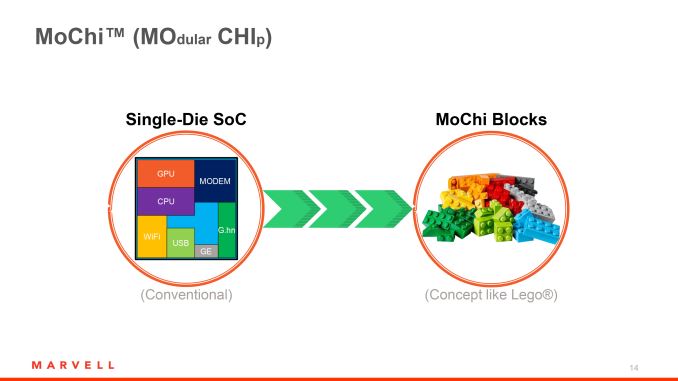
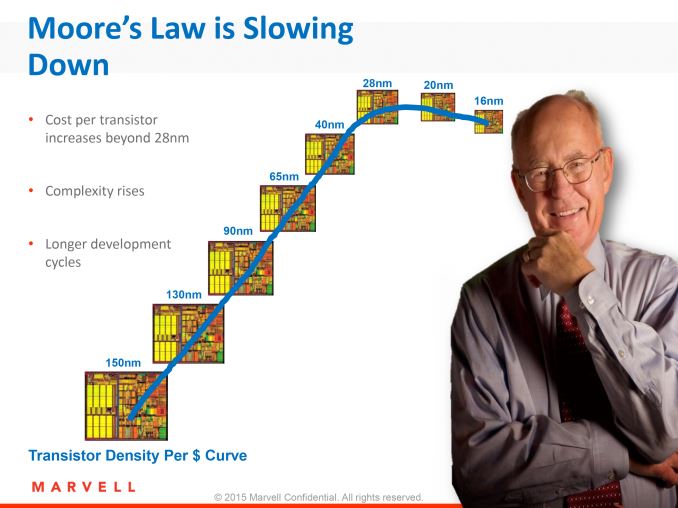
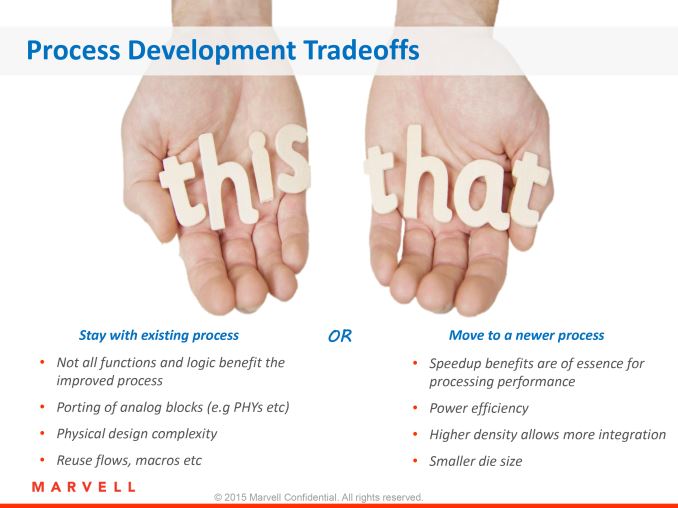
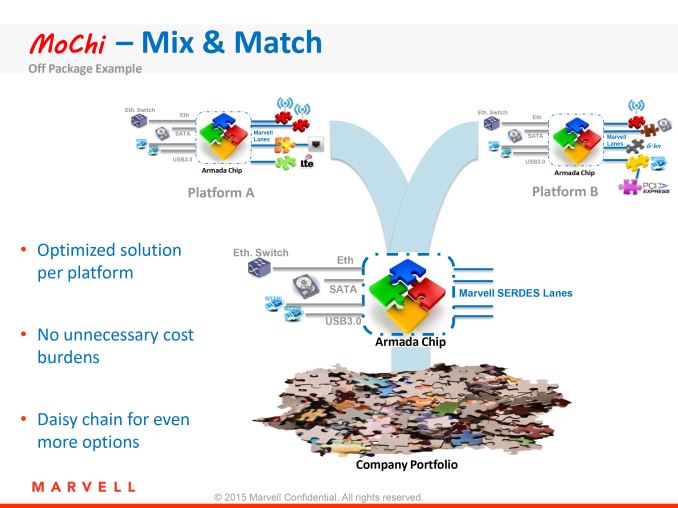
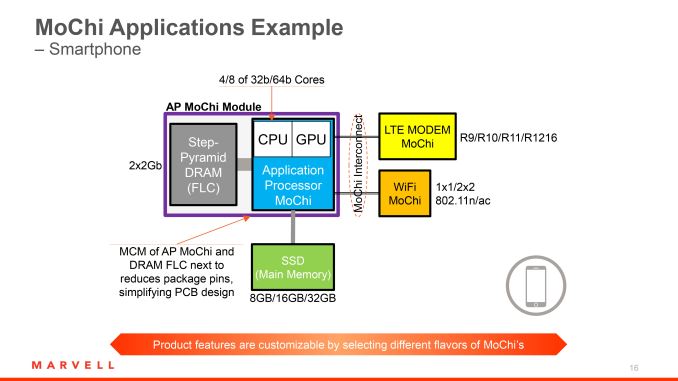
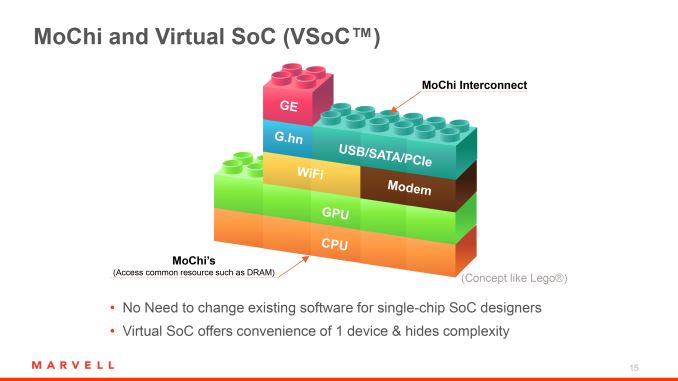
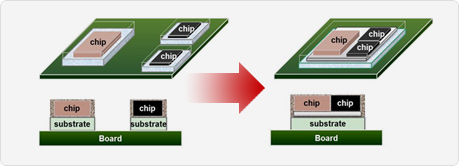

 Quote
Quote
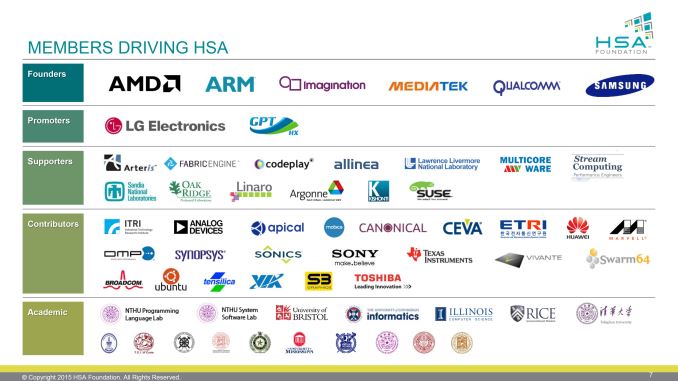
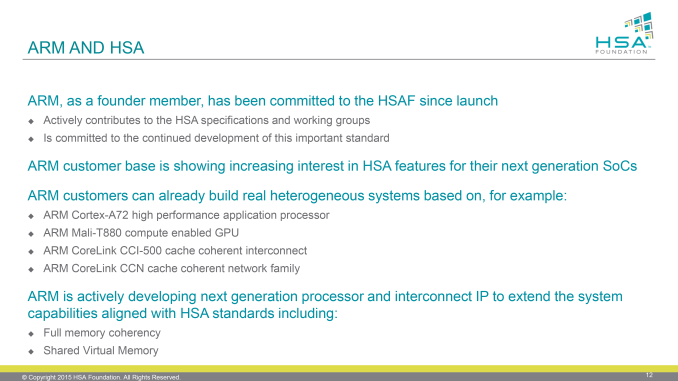
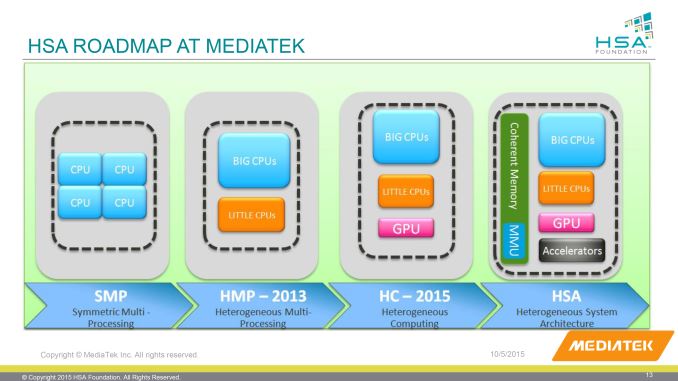
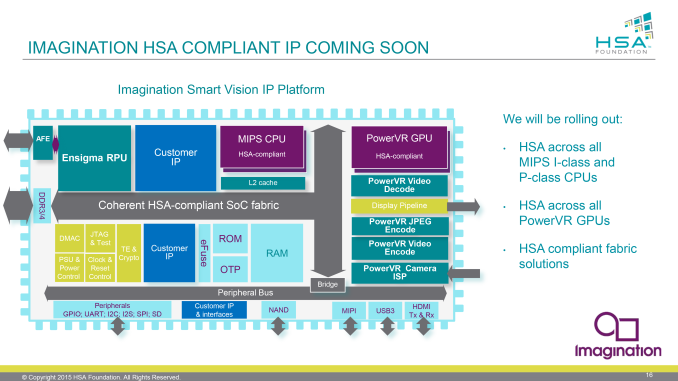
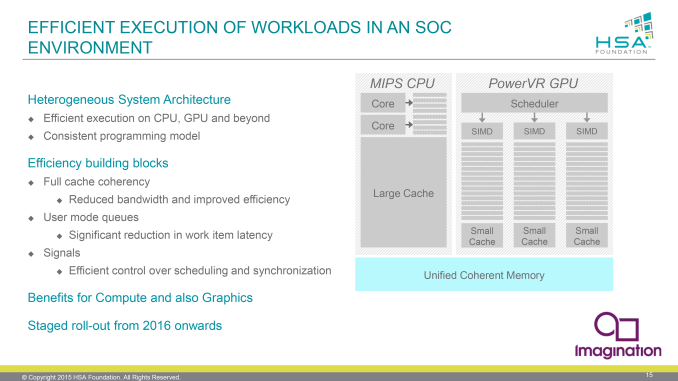

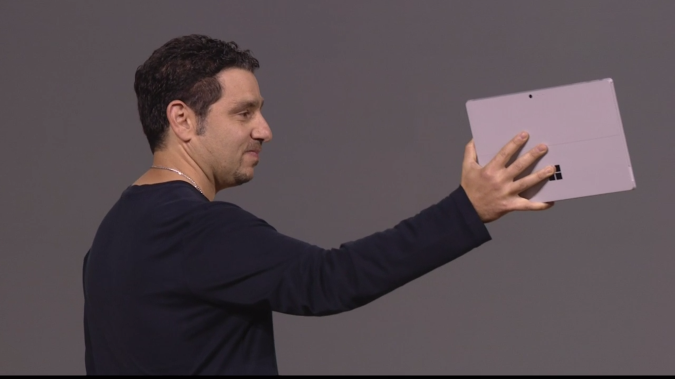
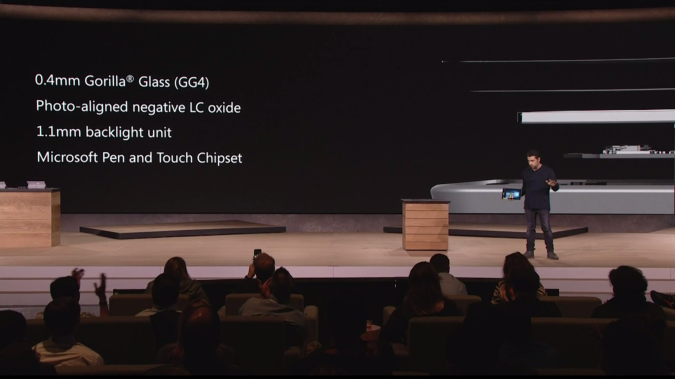
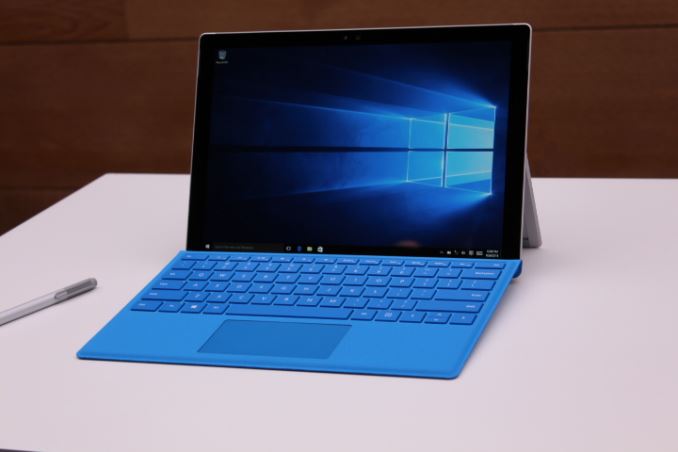
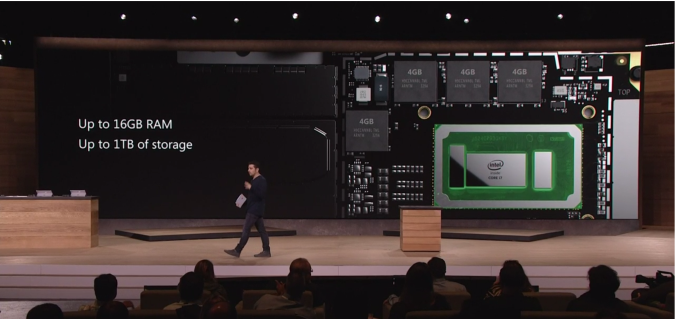
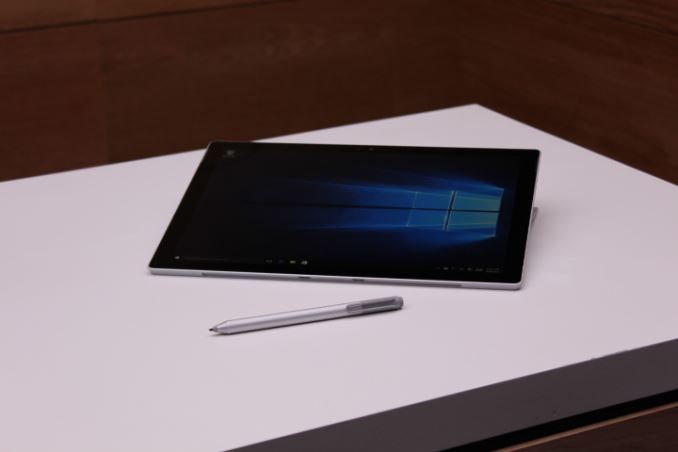
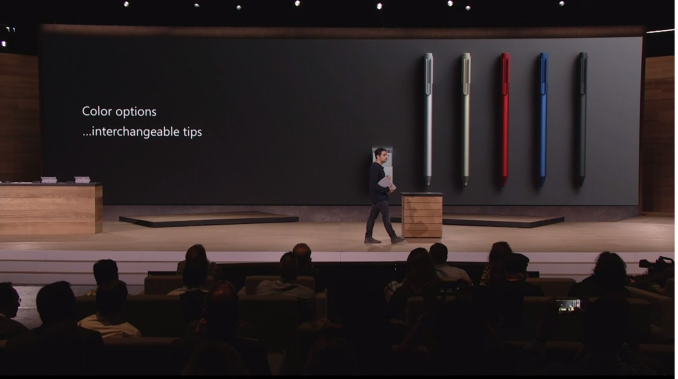
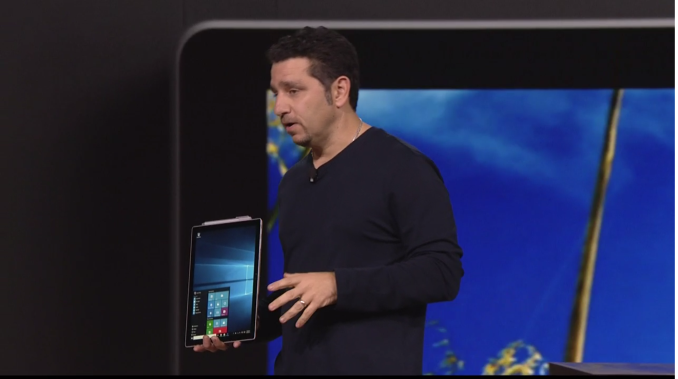

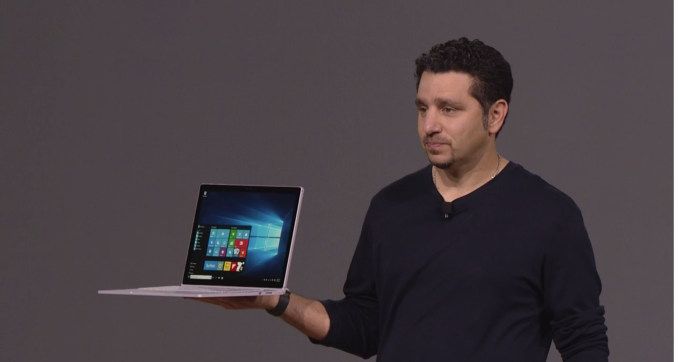
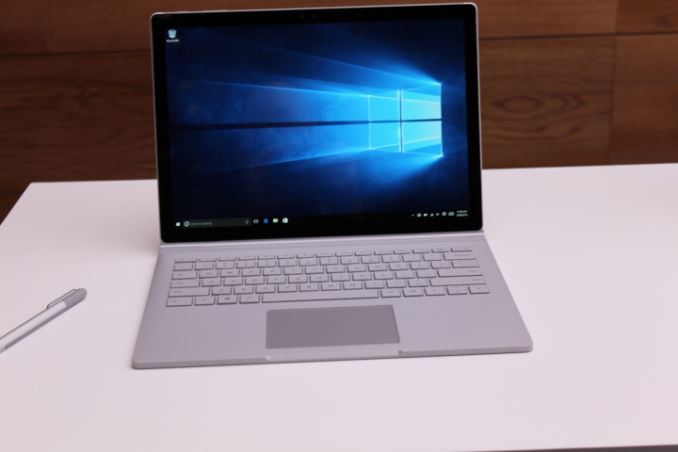
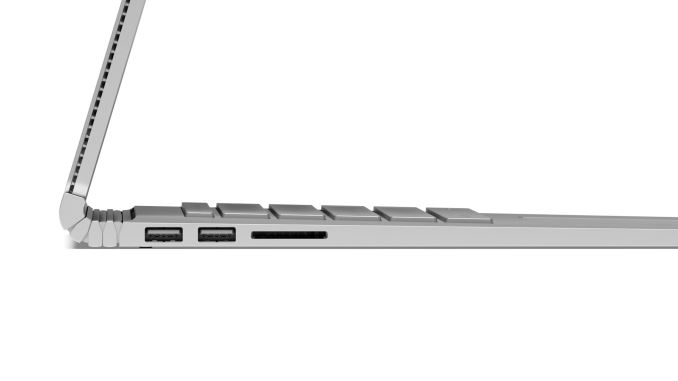
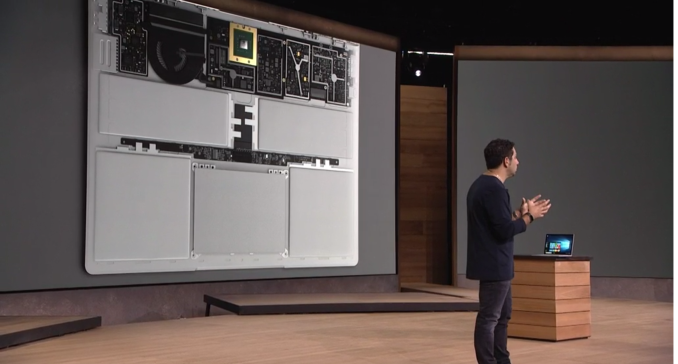
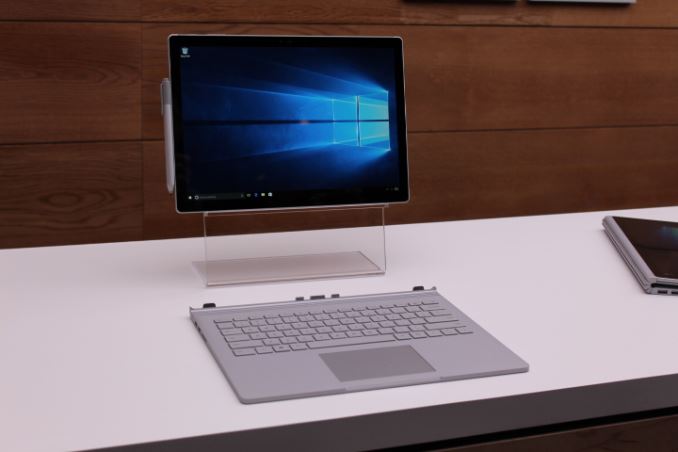
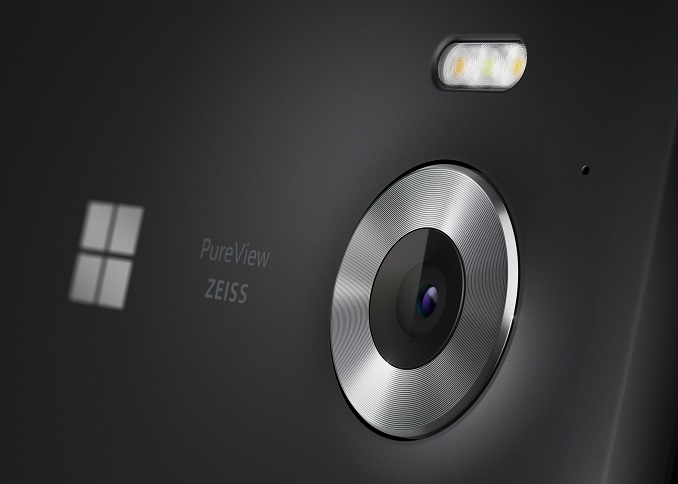




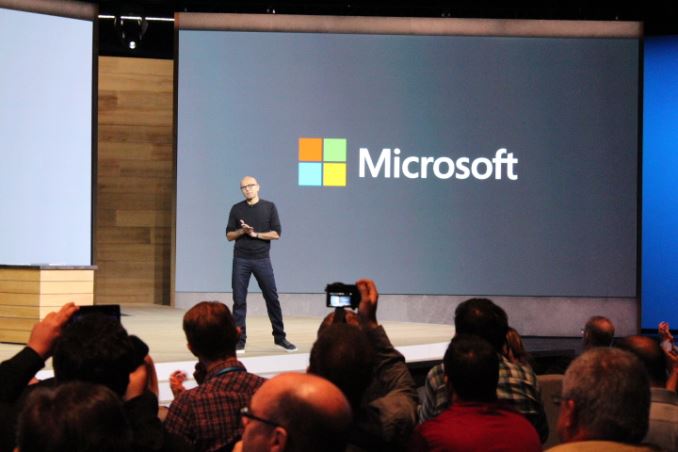


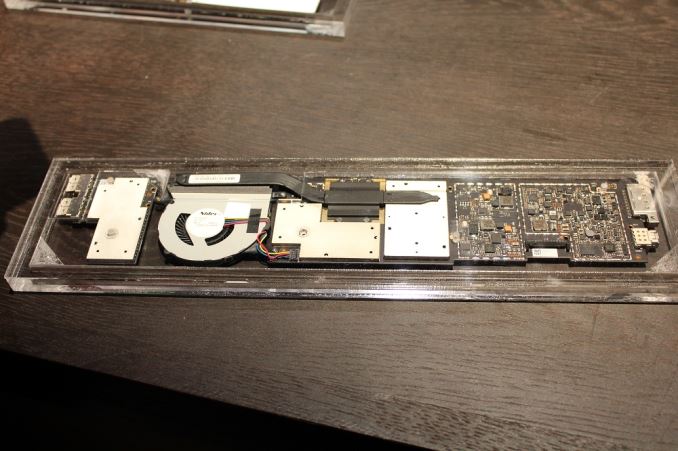
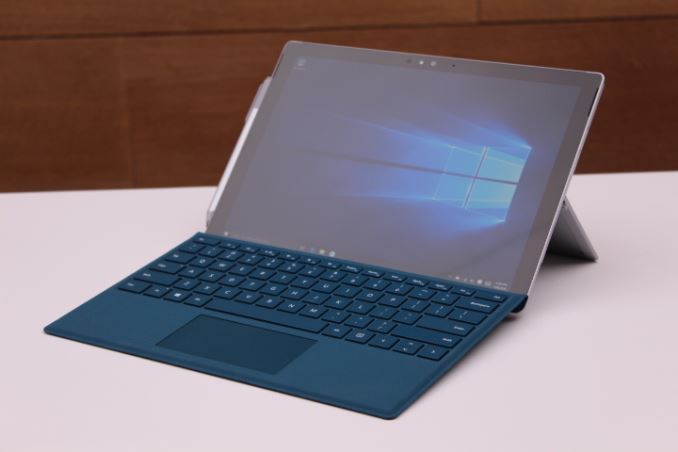
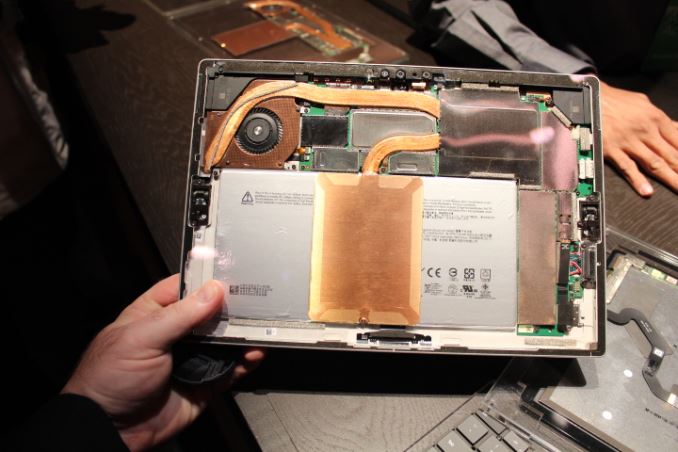
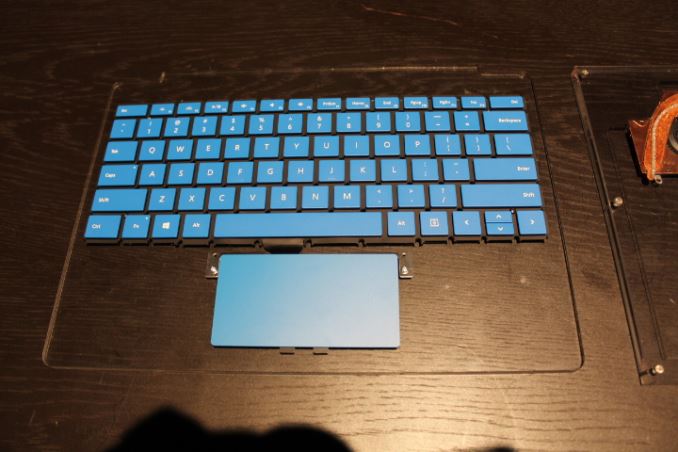



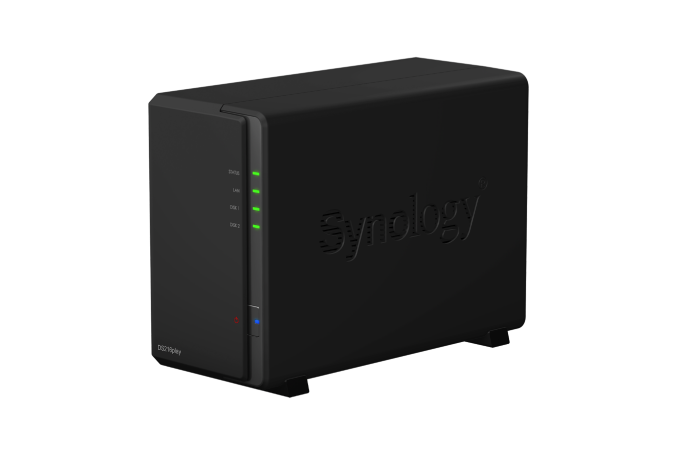



















Bookmarks